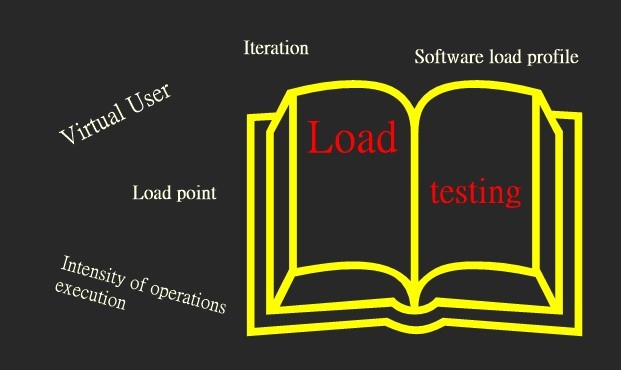To understand approaches to load testing and bugs that can be fixed with their help, you need to have a good knowledge of the terminology.
If you understand the same things that are called in a different way, you can be good at communicating, reaching the set goals in software testing.
As we know, load testing or performance testing is a special type of automated testing, that helps to simulate the actions of a certain number of virtual users on a certain web resource.
For example, you can use the everyday activity of employees of a global corporation, who work with the software, installed on their local personal computers, every day.
Or use software of a popular Internet store, in this case, with the help of interested users, that load a server, by clicking and switching between the pages.

Basic Terms
Any simulation of a web load goes together with using certain software components and methods of consistent usage.
But you need to be familiar with the main terms to properly understand a scheme of actions.- Virtual user — a special software process that cyclically simulates system functions;
- Iteration — repeating the same operation inside a cycle of all actions;
- Rate of operation performance — certain frequency of performing an operation during a certain amount of time, inside a test script, that is set by a time slice between iterations;
- Load — all operations, performed on a general web resource;
- Performance — all operations, performed during a certain amount of time;
- Software scalability — a proportional increase in performance when a load is increased;
- Profile of a software load — all actions with a set intensity that are obtained on the basis of static information or through analyzing system requirements to the testing environment;
- Load point — a calculated number of virtual users in a group, that perform operations with a certain intensity.
Now let’s analyze how these technical things are interconnected.
For example, if we display intensity through a time slice between some iterations, we can see that an increase of intensity of functioning actions is directly a decrease of a time slice.
Any increase in a load is directly proportional to an increase of nominal intensity.
For sure, if intensity increases, performance will increase too.
Also, system resources are more used.
At a particular moment, performance starts increasing more slowly (but a load can still increase), and so population and degradation of a system take place.
To conclude, we’d like to admit that you can perform load testing properly only if you are familiar with the main terms.
Analyzing the main terms and methods of their usage helps to perform integrated tests with the most efficient rates.










Leave A Comment